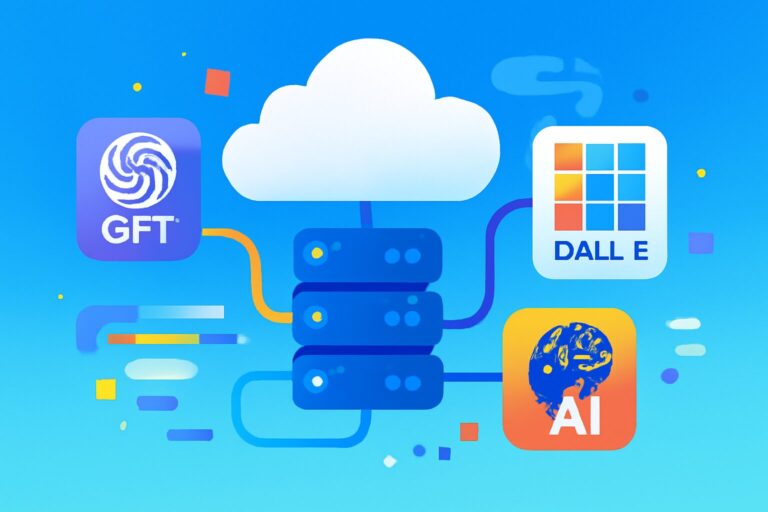# Shocked! Top 5 Hidden Risks of Azure OpenAI GPT-4.1 Context Window Overrun & Complete Solutions [Exclusive In-depth 2024]
A deep dive into the causes and solutions of Azure OpenAI GPT-4.1 context window limit issues. Learn to accurately verify model variants, regional SKU deployments, and API version support to avoid “context_length_exceeded” errors and stay updated with product evolution.
—
## Azure OpenAI GPT-4.1 Context Window Limit: Unveiling the ‘Invisible’ Technical Barriers 🚨
As the AI wave sweeps across the globe, Azure OpenAI GPT-4.1 context window limits are a technical focus for developers and enterprises. When your prompt or conversation context exceeds the model’s allowed token count, the API instantly returns a “context_length_exceeded” error, which can halt business flows. What exactly causes this dilemma, and how can you elegantly avoid it? Drawing from frontline experience, this article will systematically unlock overlooked details and best practices! 🌏
Upon deploying GPT-4.1 on Azure, you must take token quotas seriously: every model variant, regional SKU, and API version can impact available context window size. For example, the classic gpt-4-32k model supports 32,768 tokens by default, but did you know these parameters can be quietly reduced in restricted regions or custom deployments? Especially in markets such as China, context windows are often downsized, and inattentive code can overflow! More critically, model upgrades or API gateway hot updates may shift these limits. This is no exaggeration – many leading teams have faced “crashes” from this in high-volume or long-text scenarios.
To get straight to the point: whether you are a startup developer or a top-tier AI architect, only by comprehensively understanding Azure OpenAI GPT-4.1 context window mechanisms, including quotas, model versions, and regional SKUs, can you truly stay ahead in AI innovation.
—
## Overcoming Bottlenecks: Understanding Regional Variations to Expand Azure OpenAI GPT-4.1 Context Window 🌍
Many wonder: “The API claims support for millions of tokens, so why do I hit limits so quickly?” The core of this issue is **regional SKU configuration** and **API version differences**. Azure’s OpenAI services are not distributed evenly: major data centers in North America and Europe get full features early, while newer or regulated regions may have ‘lite’ SKUs with reduced context limits. For example, the much-discussed “millions of tokens” window is only available if you use specific api-versions (e.g., 2024-05-01-preview) and have passed custom reviews, and even then, only in certain regions.
If you need to expand your window, try upgrading your API version and contacting Azure Support, expressing your need for higher quotas. Consider dynamic region-switching pipelines to deploy agents in high-window regions when needed – this pragmatic approach is far more reliable than fixating on a single region.
—
## Key Guide: Instantly Check Azure OpenAI GPT-4.1 Context Window Support 🔎
Avoiding pitfalls requires “Official Documentation + Quota Check + Real-time Feedback.” Here’s how:
1. **Consult Official Docs**: [Azure OpenAI Service official documentation](https://learn.microsoft.com/en-us/azure/ai-services/openai/whats-new)
2. **Check Model SKU**: In Azure Portal’s AI resource console, locate “Model and Region SKU” for your deployment and see the actual assigned token window.
3. **Quota Audit**: If unsure, open an Azure Support ticket with your business scenario and window needs; Microsoft may expedite your request.
4. **Learn From the Community**: OpenAI’s GitHub issues and StackOverflow are active with the latest user insights and workaround reports – great for fast-tracking your project.
Review these steps regularly, for both daily development and pre-launch pressure testing – accurate checks are the cheapest safety line!
—
## Avoid Fatal Errors: Typical “context_length_exceeded” Triggers and Diagnosis 🔧
Have you faced the embarrassment of a business process stalling at the last step with a sudden API error, although you followed documentation? Here’s why it happens:
**Common triggers:**
– Accumulated, untrimmed message histories or concatenated long prompts exceeding token quota
– Lack of data segmentation: single, massive requests
– API/SDK version mismatches or parameter upgrades
– Overlooking that system messages, user input, and AI output all count toward the quota
**Diagnosis & Mitigation:**
– **Dynamic Segmentation**: Split long texts into multi-turn sessions, submitting in batches
– **Streaming Mode**: Use the API’s streaming response to process results incrementally, reducing token pressure
– **Window Truncation**: Implement middleware/client-side logic to retain only the latest N interactions, stripping out old ones preemptively
– **Logging & Tracing**: Integrate comprehensive logs to track overrun roots for easier optimization
Never let a super AI model “fail because of a small window”—this is a key lesson for every AI deployment!
—
## Major Update: Stay in Sync with Azure OpenAI GPT-4.1 Context Window Limit Changes 📝
For frontline tech teams, real-time monitoring of context window changes is now a project lifeline. Microsoft frequently posts updates in the [official community](https://techcommunity.microsoft.com/) and the developer blog. For 2024, larger windows (even up to millions of tokens) are gradually rolling out, with longer-region promotion lag and occasional shrinking of assigned quotas without notice.
Best advice: increase regression tests, tightly monitor API responses, and prepare contingency “window downgrade” call strategies for customer continuity. Join both official and third-party communities for dynamic updates—the best way to share bugs and stay ahead!
—
## Advanced Perspective: Building a Scalable Azure OpenAI GPT-4.1 Context Window Limit System 💡
After countless cases of overruns, the industry is moving to more automated, engineering-driven solutions:
– **Cross-region Load Balancing**: Deploy models in several regions, switching to higher window SKUs as needed
– **Automated Monitoring & Alerts**: Use Prometheus/Grafana for token usage tracking and proactive interventions
– **Low-latency Networking**: Prefer high-bandwidth, low-latency CDN or direct lines in fragmented data scenarios
– **Failover Solutions**: Configure hot standby/backup SKUs, auto-switched if main region hits a quota cap
Through these tech stack upgrades, our own NLP production line has gone from repeated failures to robust, self-healing AI engines. Every improvement is forged in real scenarios—worth your deep reference.
—
## Community Hot Topics: Common Misconceptions on Azure OpenAI GPT-4.1 Context Window 🤝
Surveying community feedback, common misunderstandings include:
– **Taking official max as absolute**: “Docs say it, so it’s my quota.” Wrong! Confirm with your SKU and region.
– **No segmentation**: “Send as much as possible in one go.” Wrong! Efficient chunking and truncation keep models stable.
– **Chasing giant windows over stability**: “Bigger is always better.” Not always – ultra-large windows can slow response and raise costs dramatically.
Best practice: Focus on tangible business needs, cooperate with Microsoft and the developer community, and iterate solutions (multi-turn window control, token rate strategies). Never trust a single indicator.
—
## FAQ
**What is Azure OpenAI GPT-4.1 context window overrun?**
It means the total input and output tokens in one API request exceeds the max allowed by your model or region, causing the “context_length_exceeded” error.
**How to check my Azure OpenAI instance’s token window?**
In the Azure portal, find your OpenAI resource, click your model deployment, and check the assigned “context length” parameter. You can also verify via API and documentation.
**What to do after a sudden ‘context_length_exceeded’ error?**
Split your context to check if the total token count is exceeded. Try upgrading API SDK or switching to higher SKUs. For persistent issues, contact Microsoft support.
**Are context windows different across regions?**
Yes. Region and SKU impact window size. N. America/Europe often get full quotas; new/emerging regions may be more limited.
**Can context window overruns be avoided automatically?**
Yes. Use dynamic segmentation/rolling window mechanisms in code to manage token count and avoid overrun.
**What if docs are updated but my window remains unchanged?**
Sometimes docs are updated before backend rollout. Use support tickets and community feedback; wait for full rollout.
—
## Conclusion & Next Steps
“AI models must not go down or lose data from context overruns—this is the bottom line for intelligent business!” If you’re struggling with Azure OpenAI GPT-4.1 context windows, don’t go it alone. Want more tailored and large-scale implementation experience? Visit us at [https://www.de-line.net](https://www.de-line.net) and connect with our AI experts to stay ahead in the context revolution! 💡🚀
************
The above content is provided by our AI automation poster




